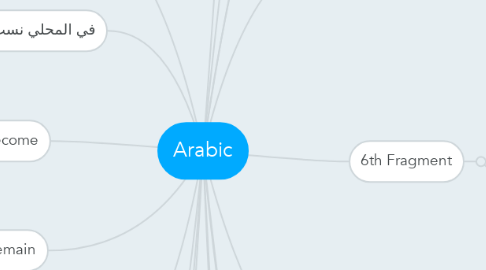
1. Any Word
1.1. Ism
1.2. Fil - Past
1.3. Fil - Present
1.4. Command
2. كان - Is
2.1. + present tense = used to be
3. يكون - Will be
3.1. سَيَكُونُ - He will be
3.2. سَوفَ يَكُونُ - Soon he will be
4. Negation - Strength
4.1. ليس المسلمُ كاذباً (least strongest)
4.2. ما المسلمُ كاذباً
4.3. ليس المسلمُ بِكاذبٍ
4.4. ما المسلمُ بِكاذبٍ (strongest)
5. To become
5.1. اَصْبَحَ - He became
5.2. يُصْبِحُ
5.2.1. started becoming (with present tense)
6. To Remain
6.1. ظَلَّ - He remained
6.2. يَظَلُّ
6.2.1. + present tense = kept on
7. في المحلي نسب - Doesn't look like Nasb, but it is
8. Failuhu dhamir mustatir taktir - pronoun
9. When a word is shortened and there are two sukoons the vowel is taken away are replace with a fatah, dammah or kasra for an alif, wov and yaa respectively
10. Passives
10.1. المُتَّعَدّي - Transitive
10.1.1. Able to add someone or something
10.2. لازم Intransitive
10.2.1. Not able to add someone or something
10.3. معروف - Doer is known (Active)
10.4. مجهول - Doer is NOT known (Passive)
11. How to Identify Passives
11.1. Starts with a Dhamma
11.2. Past Passive
11.2.1. Multiple uus
11.2.2. One e
11.3. Present Passive
11.3.1. One U
11.3.2. Multiple Aas
12. Ism Mowsool
12.1. اسم موصول
12.2. صلة الموصول
13. Negation
13.1. Absolute Negation - لا هافيث للجنس
13.1.1. Very strong form of negation
13.1.2. The ism followed must be light
13.1.3. The ism must be in nasb status
13.1.4. Nothing can come between the la and its ism
13.1.5. Together the la and its ism make up the mubtada
13.1.6. Difference between la and ma
13.1.6.1. La is an answer to a question
13.1.6.2. Ma is a correction
13.2. Negation for Jumlah Ismiyah - using ما and ليس
13.2.1. 4 ways to Negate
13.2.1.1. ليس - He is not - used with Isms
13.2.1.2. ما (used for more impact) No!
13.2.1.3. Attach a ب
13.2.1.4. Make it نسب
13.3. Negating Past tense
13.3.1. using ما
13.3.1.1. ما نَصَرَ
13.3.2. using لم
13.3.2.1. لَمْ يَنْصُرْ
13.3.3. Did not
13.3.3.1. ما + Past
13.3.3.2. لم + Present
14. Negation for Jumlah Fialyah -Study
14.1. Past - He didn't study
14.1.1. ما درس
14.1.2. لم ىَدْرُسْ
14.2. Present - He doesn't study
14.2.1. ما يَدْرُسُ
14.2.2. لا يَدْرُسُ
14.3. Future - He will not study
14.3.1. لن يَدُرُسَ
14.4. He hasn't yet studied
14.4.1. لمّا يَدْرُسْ
15. 5 types of مفلعيل
15.1. مفعول به
15.1.1. Answers the question ‘What/Who’
15.2. مفعول فيه
15.2.1. Answers the question ‘When and where’
15.3. مفعول له
15.3.1. Answers the question ‘Why’
15.4. مفعول حال
15.4.1. Answers the question ‘How’/as/while
15.4.1.1. A sentence followed by و and a pronoun is a hal
15.5. مفعول مطلق
16. 6th Fragment
16.1. تمييز
16.1.1. Specifier
16.1.1.1. Must be نصب
16.1.1.2. Must be singular
16.1.1.3. Must be common نكرة
17. Ism Tafdeel
17.1. Superlatives
17.1.1. 3 ways
17.1.1.1. Adding ال
17.1.1.2. Making it mudaf
17.1.1.2.1. 3 cases
17.1.1.2.2. كُلُّ
18. 3 Special mudafs
18.1. كُلُّ
18.1.1. All of
18.1.2. with tanween - everything, everyone
18.2. بَعْضَ
18.2.1. Some of
18.2.2. with tanween - some people, something
18.3. غَيْرُ
18.3.1. Other than
19. Complex Sentences
19.1. Rafa
19.1.1. Common followed by fi'l - it's mawsoof and sifa
19.1.1.1. Sifa will be fi mahali rafa or nasb (whatever the mawsoof is)

